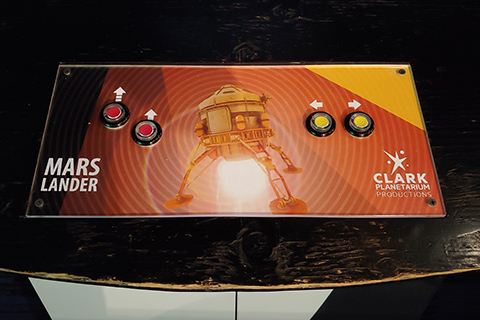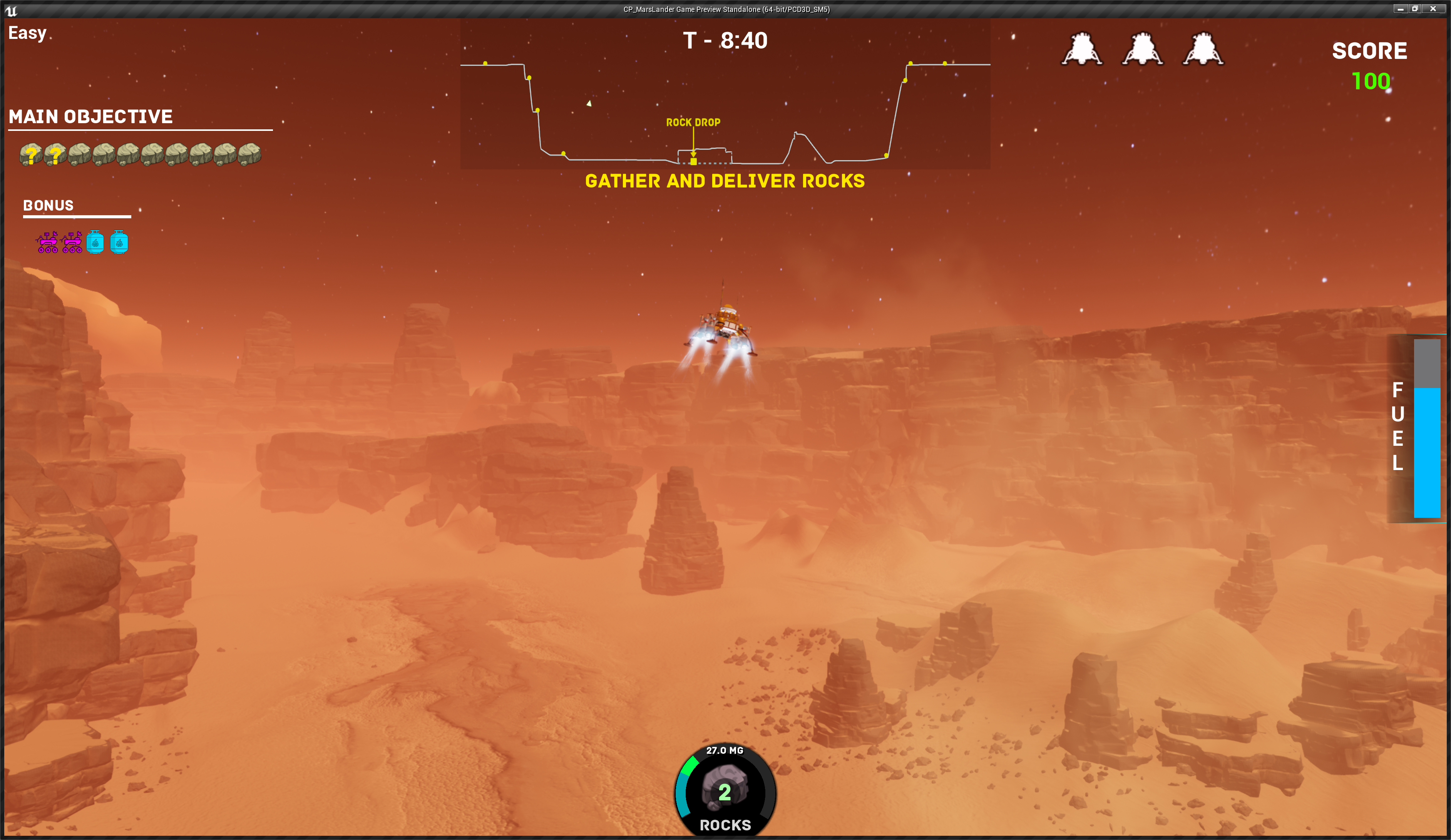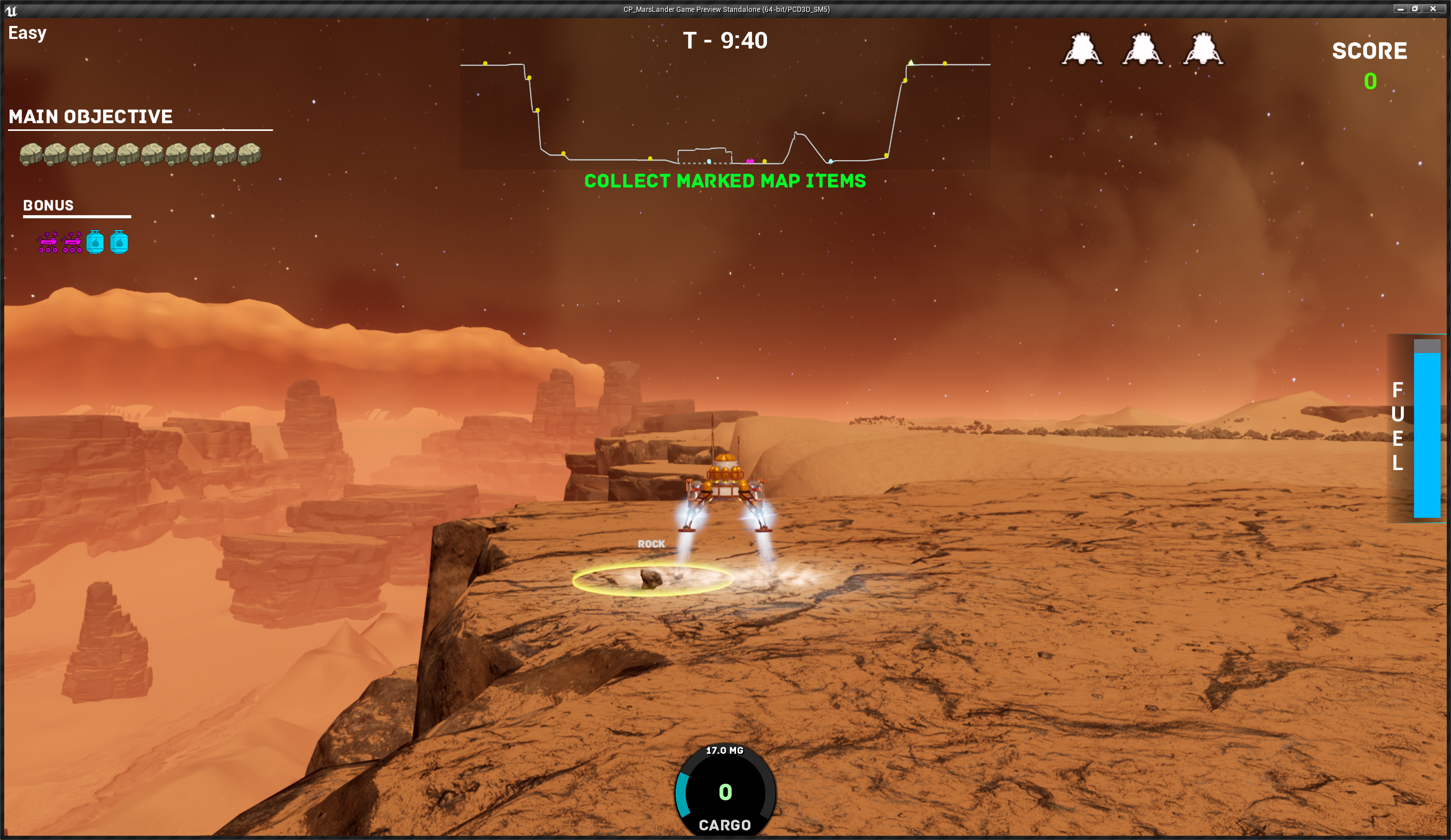Mars Lander
Experience the Martian surface by collecting rock samples, rovers, and fuel in a thin atmosphere. Notice how increasing the lander's mass decreases the efficiency of your thrusters. Visitors must balance gravity, thrust and fuel consumption.
Educational Points
Learn about inertia and gravity.
- Inertia: Once thrust is applied, the lander will continue to move in that direction until countered by opposite thrust.
- Gravity: The surface gravity on Mars is only about 38% of the surface gravity on Earth.
- Mass: Collecting mission objectives weighs down the lander. Visitors will see and feel the effect of added mass on the lander.
Mission Objectives
Collect rock sampels, rovers, and fuel pods.
Visitors are tasked with finding rock samples, rovers and fuel pods. They are on a mission to gather these resources and return them to the given mission point. While collecting these objectives, the lander’s mass will increase with each gathered object; this will continue until the items are delivered.
User Interaction
Buttons are used to control vertical and side thrusters.
- Left: Gives a strong thrust and moves the lander quickly but uses more fuel.
- Right: Gives a weak thrust and moves the lander slowly but conserves fuel.
- Left: Rotates the top of the lander to the left.
- Right: Rotates the top of the lander to the right.

User Experience
Mars Lander has three available difficulty modes: Easy, Normal, and NASA. Each mode is progressively harder and adds additional realism to the challenge of navigating the Martian surface.
- Easy: This mode is intended for very young or novice guests; mechanics are kept extremely simple. The lander automatically orients upward and side thrusters only impart lateral velocity. The lander has boosted durability thereby increasing the number of collisions before exploding.
- Normal: This mode introduces rotational velocity. Side thrusters now rotate the lander but the rotational velocity reduces over time. In effect, this requires visitors to orient the ship towards intended landing zone using side thrusters and add lateral velocity via the vertical thruster. To land safely, visitors must counter rotate the lander and add thrust to negate lateral velocity.
- NASA: This mode has even more realistic mechanics. Rotational velocity will continue until countered by an opposite thrust.
Hold Time Data
The aggregate average hold-time of all our non-digital exhibits in our facility is around 2 minutes 12 seconds. Our leading digital interactives score significantly higher, with Mars Lander having our 3rd highest ranking at more than double the average hold time at 5 minutes 3 seconds. Mars Lander is a very consistent performer among people from approximately 3rd grade onward, and is a very approachable exhibit even for many people inexperienced with electronic games.
Software Pricing
Hardware Provided
- Keylok license dongle
- Arduino-based control interface wired to arcade quality buttons sourced from Suzo-Happ
Recommended Hardware
- Display: Moon Lander is made to work on 4k or 2k displays. Ensure Windows display scaling is set to 100%
- Audio: Speakers should be plugged directly into the computer. Using TV speakers may not work if the computer is on before the TV has been turned on.
Required Computer Specs
- Quad Core CPU (or better).
- Power Supply: 600 Watt (or better).
- Graphics Card: Nvidia RTX 3060 Ti (or better).
- RAM: 16 GB (or greater).
- SSD: 120+ GB.
- OS: Windows 10 or Windows 11.



